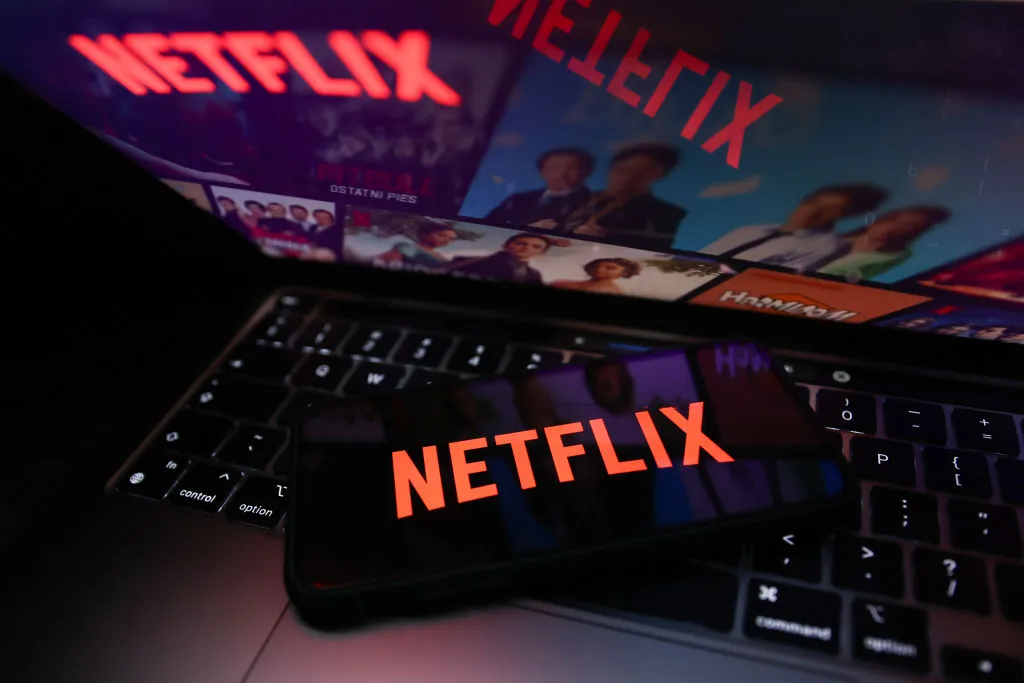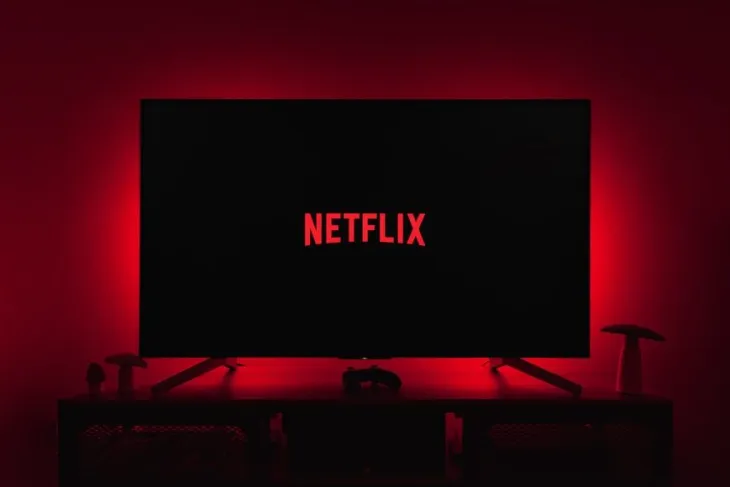In a world where streaming services have become the norm, one name stands out above the rest – Netflix. How did this humble beginning of a company transform into the giant it is today? From its innovative transition from DVD rentals to online streaming, to the creation of its own original content, Netflix has revolutionized the way we consume entertainment. In this blog post, we will explore the key factors that contributed to Netflix’s rise to popularity and dominance in the industry. Join us as we delve into the fascinating journey of how Netflix became the household name it is today.
A Humble Beginning of a Giant: The Launch of Netflix

netflix
In the late 90s, a revolutionary idea was born in the minds of two visionaries – Reed Hastings and Marc Randolph. They sought to challenge the status quo of the traditional brick-and-mortar video rental industry with a unique, disruptive business model. In 1997, they brought this idea to life with the launch of ‘Kibble,’ a mail-order DVD rental service that was destined to redefine the landscape of home entertainment.
The concept was simple yet groundbreaking. Instead of visiting a physical store to rent a movie, customers could now select their favorite titles online and have them delivered right to their doorsteps. This innovative approach not only offered unparalleled convenience but also eliminated the common frustrations of late fees and return-by dates associated with traditional video rental stores.
But the duo didn’t stop there. Recognizing the potential of their novel idea, they decided to take a bold step further. In 1999, they introduced a subscription model, a pioneering move that allowed users to rent unlimited movies for a fixed monthly fee. This was a game-changer, as it offered customers the freedom to watch as many movies as they wanted without the worry of accumulating late fees.
Read all about: How Long Does It Take to Download a Netflix Movie? as well as How to Send Netflix Downloaded Movies: The Ultimate Guide to Sharing Across Platforms with FlixiCam
This marked the beginning of an incredible growth trajectory for Netflix. The company’s user-friendly platform, coupled with its disruptive business model, quickly attracted a large customer base. By 2006, Netflix had amassed a staggering 6.3 million subscribers and had started to turn a profit.
Netflix’s early success can be attributed to its relentless focus on customer convenience and its willingness to challenge the traditional norms of the industry. These foundational principles not only paved the way for Netflix’s transformation into a streaming giant but also set a new standard for the home entertainment industry.
As we delve deeper into Netflix’s journey, we’ll explore how the company continued to innovate and adapt, eventually becoming the entertainment titan we know today.
Embracing Change: Netflix’s Strategic Shift from DVD to Streaming

netflix
As we delve deeper into the story of Netflix’s meteoric rise, it is crucial to highlight the pivotal year of 2007. This was the year when Netflix, in response to the dwindling DVD sales, bravely ventured into the uncharted territory of online streaming. Recognizing the shift in consumer behavior and the potential of the internet as a medium for content delivery, Netflix made a strategic decision that would change the course of home entertainment forever.
Netflix committed a whopping $40 million to the development of groundbreaking streaming technologies, a move that was met with skepticism by many industry observers due to the nascent state of streaming at the time. Unfazed by the naysayers, Netflix went on to launch its first streaming product, aptly named ‘Watch Now.’ This move catapulted Netflix to the forefront of the streaming industry, marking them as a trailblazer in this new digital frontier.
Netflix’s forward-thinking approach didn’t stop there. They astutely negotiated cost-effective licensing agreements with companies like Starz, enabling them to curate an initial streaming library. This strategic move allowed Netflix to tap into a fresh market with minimal competition, setting the stage for the streaming behemoth we know today.
However, the path to success was not without its hurdles. In 2011, Netflix made a controversial decision to separate its DVD and streaming services. This move was met with significant backlash, leading to a considerable number of subscriber dropouts. But, Netflix displayed remarkable resilience and effective crisis management. They listened to their customers, learned from their mistakes, and persevered through the storm. By the end of the year, they emerged stronger, with an impressive surge in subscriber numbers.
Netflix’s journey from DVD rental service to streaming pioneer is a testament to the company’s innovative spirit and willingness to adapt to changing technologies and consumer preferences. Their story is a powerful reminder that embracing change and taking calculated risks are key to staying ahead in the ever-evolving world of technology and entertainment.
Netflix’s Evolution into a Powerhouse Movie Studio

netflix
In 2012, Netflix faced a significant challenge with the loss of thousands of titles from its streaming library due to complex licensing hurdles. This unexpected obstacle could have derailed many companies, but Netflix saw it as an opportunity to pivot and innovate. Recognizing the volatile nature of the entertainment industry and the need for a strategic shift, Netflix took a bold step towards becoming a movie studio itself.
Read all about: How to Netflix Party on iPhone: A Step-by-Step Guide for an Ultimate Movie Night Experience
Netflix ventured into the realm of content production, investing heavily in creating original content that was exclusive to its platform. This was a daring move, as it required considerable investment and a leap of faith into uncharted territory. The decision to become a content creator was driven by the desire to control their destiny and not be at the mercy of third-party content providers.
Their first foray into original content production was the critically acclaimed series ‘House of Cards,’ released in 2013. Despite a hefty production budget, ‘House of Cards’ quickly became a sensation, attracting a massive audience and garnering rave reviews. The success of this series served as a proof of concept for Netflix’s original content strategy. It demonstrated that investing in original content not only lures in new subscribers but also ensures the loyalty of existing ones, ultimately leading to increased revenue.
Building on the success of ‘House of Cards,’ Netflix continued to invest in original content, producing a wide range of shows and movies that catered to diverse audiences. Their portfolio of original content has since grown exponentially, with hits like ‘Stranger Things,’ ‘The Crown,’ and ‘Narcos’ further solidifying their reputation as a leading content producer.
In 2016, Netflix took another significant step by expanding into major international entertainment markets. This strategic move showcased the company’s ability to not only adapt to changes in viewership but also to geographical advancements in the entertainment industry. By providing localized content for overseas audiences, Netflix has successfully established itself as a global entertainment powerhouse.
Netflix’s evolution into a movie studio is a testament to its innovative spirit and willingness to take calculated risks. It serves as a reminder that in the ever-evolving world of technology and entertainment, adaptability and forward-thinking are key to staying ahead of the curve.
Mastering the Game: Netflix’s Expansion Strategy and Industry Dominance
Netflix’s journey to the top of the entertainment industry is a fascinating tale of innovation, daring decisions, and strategic growth. By 2017, the streaming giant had already achieved a remarkable milestone: it had surpassed the total number of cable TV subscribers in the United States. This was not just a triumph for Netflix, but a clear indication of the shifting dynamics in the world of entertainment. It was a moment that marked the beginning of a new era, where digital streaming started to take precedence over traditional cable television.
Netflix’s strategy was not just about gaining subscribers, but also about producing quality content. In 2018, the company announced plans to invest a whopping $8 billion in content production, a significant leap from the $6 billion budget of the previous year. This investment was not just an indication of Netflix’s financial strength, but also a testament to their commitment to providing high-quality, diverse, and engaging content to their audience.
One of the key aspects of Netflix’s expansion strategy was its focus on international markets. Recognizing the potential for growth beyond the US, Netflix started investing in foreign programming. Shows like Germany’s ‘Dark’, Japan’s ‘Terrace House’, and Sweden’s ‘Wallander’ not only became popular in their home countries but also gained a global following. This demonstrated how streaming platforms like Netflix have the power to deliver unique, culturally diverse content to audiences worldwide, breaking down geographical barriers and creating a truly global entertainment platform.
Netflix’s achievement of surpassing cable subscribers in the US market was not just a milestone, but a testament to the company’s innovative approach and relentless pursuit of growth. It was a clear signal that Netflix was not just a participant in the entertainment industry but a dominant force shaping its future. If you liked this post check out does netflix come with xfinity and why did netflix remove free trial?
Netflix’s expansion strategy was a calculated risk that paid off handsomely. It was a bold move that not only cemented Netflix’s position in the industry but also set a precedent for other streaming platforms. It was a clear signal that in the world of entertainment, innovation and adaptability are the keys to success.
Netflix’s Journey Forward: Potential Directions and Emerging Challenges
As we gaze into the crystal ball of the future, the landscape of home entertainment, with Netflix at its helm, appears to be intricately intertwined with emerging technologies like augmented reality (AR) and virtual reality (VR). These technologies have the potential to revolutionize the way audiences consume content, providing immersive experiences that transcend traditional viewing paradigms.
Despite some skepticism expressed by Netflix’s CEO Reed Hastings, the mounting competition from industry giants like Amazon and Hulu, as well as rising platforms, underscores the necessity of embracing AR and VR. Incorporating these technologies could offer a unique selling proposition, ensuring Netflix’s continued reign as a leading home entertainment provider.
Another key player in Netflix’s future trajectory is its data-driven strategies. The streaming behemoth sits atop a goldmine of user data, encompassing viewer behavior and preferences. By leveraging this data, Netflix could enhance its content programming, tailoring it to attract high-traffic audiences. This data-centric approach is particularly salient in light of the intensified competition in the streaming industry, where understanding audience preferences can be the difference between success and stagnation.
Moreover, the ongoing consolidation trend in the media industry nudges Netflix towards strategic acquisitions. One such acquisition was the British comic book publisher Millarworld in 2017. This marked Netflix’s first foray outside its network, signaling its strategic move to secure intellectual properties and broadcast rights. Such acquisitions not only diversify Netflix’s content offering but also fortify its competitive position, ensuring it stays one step ahead in the ever-evolving streaming landscape. If you have any trouble with Netflix find out what to do if netflix is not working and enjoy your favorite shows, also check out how to find and manage Netflix downloaded movies on android.
As we delve deeper into the 21st century, Netflix’s ability to adapt and innovate will be put to the test. The company’s future hinges on its capacity to navigate these emerging trends and challenges, and continue to provide the engaging, high-quality content that its global audience has come to expect. The stage is set, and the world is watching eagerly to see how Netflix will shape the future of home entertainment.
Unraveling the Success Factors of Netflix
Netflix’s journey to the top of the streaming industry is an intriguing tale of strategic decisions, relentless innovation, and an unwavering focus on customer preferences. The company’s success is not a result of sheer luck or coincidence. Instead, it’s a testament to the power of strategic thinking and the courage to disrupt established norms.
The first pivotal decision that propelled Netflix towards success was its disruption of the traditional video rental industry. By implementing a unique DVD-by-mail service, Netflix offered a level of convenience that was unheard of at the time. This innovative approach not only differentiated Netflix from its competitors but also set the stage for its future endeavors.
Recognizing the potential of emerging technologies, Netflix made the bold move to transition from a DVD rental service to an online streaming platform. This decision was a response to the evolving consumer preferences and the rapid digitalization of entertainment. By being an early adopter of streaming technology, Netflix was able to establish a strong foothold in the market and pave the way for the future of entertainment.
Netflix’s third strategic decision, which further solidified its dominance, was the heavy investment in the production of original content. By creating its own shows and movies, Netflix managed to attract and retain a massive subscriber base. This move not only gave Netflix control over its content but also allowed it to tailor its offerings to the tastes and preferences of its audience, thanks to its data-driven approach.
The combination of these strategic moves led to Netflix’s exponential growth and popularity, transforming it from a DVD-by-mail service to the streaming behemoth it is today. It’s a powerful reminder of how businesses can disrupt existing markets, grow their user base, and navigate dynamic environments by identifying a core growth metric and relentlessly focusing on it.
Check out: Netflix Movies on Laptop: A Step-by-Step Guide to Downloading and Enjoying Offline and How to Host a Netflix Watch Party in Australia: The Ultimate Guide
Netflix’s story is a masterclass in strategic evolution. As Reed Hastings, Co-founder and Co-CEO of Netflix, once said, “Companies rarely die from moving too fast, and they frequently die from moving too slowly.” This quote encapsulates the essence of Netflix’s success: its ability to adapt, innovate, and move quickly in response to industry changes.
As we delve deeper into the factors contributing to Netflix’s success, it’s clear that the company’s journey is a testament to the power of strategic decision-making, relentless innovation, and an unwavering focus on customer preferences. And as the company continues to evolve and grow, these factors will remain integral to its ongoing success.
FAQ & Users Questions
1. How did Netflix become popular?
Netflix became popular through its innovative approach to DVD rentals and its transition to online streaming. The company invested in original content and focused on a single growth metric that its competitors overlooked, resulting in its success.
2. What was Netflix’s key innovation?
Netflix’s key innovation was the development of a frictionless DVD rental business facilitated by the internet. It also created a streaming business from scratch, which further contributed to its success.
3. Did people initially see Netflix’s potential as a movie studio?
No, many people did not initially see Netflix’s potential as a movie studio. However, the company’s decision to invest in original content creation ultimately led to Netflix becoming a major TV and movie studio globally.
4. How did Netflix overcome challenges?
Netflix overcame challenges by making ambitious and difficult business decisions, such as investing in original content and transitioning from DVD rentals to online streaming. The company also faced backlash and loss of content, but managed to adapt and continue its growth.
5. What is the future of Netflix?
The future of Netflix is closely linked to advancements in augmented reality (AR) and virtual reality (VR). While Netflix has been experimenting with AR and VR, there are no concrete plans yet. Additionally, competition from rivals like Amazon and Hulu is expected to intensify, but Netflix continues to have plenty of options for growth.
6. How did Netflix utilize data to improve its programming?
Netflix utilized data to improve its programming by collecting extensive data about its users and their viewing habits. This allowed the company to increase viewership and create better shows. A data-centric approach to TV production is a potential area of growth for Netflix in the future.
7. What are the key lessons to learn from Netflix’s success?
The key lessons to learn from Netflix’s success are: create a disruptive business model, adapt to changing technologies and consumer preferences, and invest in original content. These three lessons have contributed to Netflix’s popularity and success.
